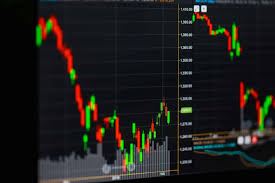Master Forex Trading A Comprehensive Guide for Beginners and Pros

Master Forex Trading: A Comprehensive Guide for Beginners and Pros
In the fast-paced world of finance, Forex (foreign exchange) trading has emerged as one of the most dynamic and potentially lucrative markets. With trillions of dollars exchanged every day, Forex presents unique opportunities for traders looking to capitalize on currency movements. Whether you’re just starting out or have some experience under your belt, this guide is designed to help you navigate the complexities of Forex trading and enhance your skills. For a closer look at trading platforms, you can visit forex trading website https://kuwait-tradingplatform.com/, where you’ll find insightful resources.
Understanding the Forex Market
The Forex market is the global marketplace for trading national currencies against one another. Unlike stock markets, the Forex market operates 24 hours a day, five days a week, with trading sessions that overlap between various financial centers around the world. This decentralization means that traders can engage in currency trading at any time, depending on their strategy and trading preferences.
Key Terminology
Before you dive into trading, it’s crucial to understand some key terms, including:
- Currency Pair: This represents the relationship between two currencies. The first currency is the base currency, and the second is the quote currency (e.g., EUR/USD).
- Pips: A pip signifies the smallest price move in a forex pair. Understanding pips is essential to measure the price movements and potential profits or losses.
- Leverage: This allows traders to control larger positions with a smaller amount of capital. However, it also increases risk and potential consequences.
- Spread: The difference between the buying and selling price of a currency pair. A tighter spread often reflects a more liquid market.
Developing a Trading Strategy
Successful Forex trading relies heavily on a well-thought-out strategy. Whether you are a day trader who makes numerous trades each day or a position trader who holds positions for weeks, having a robust trading plan is vital. Here are steps to create your strategy:
1. Define Your Goals
Establish what you aim to achieve with Forex trading—be it short-term profits, long-term investments, or hedging against currency risks.
2. Choose a Trading Style

Your trading style will determine how you approach trades. Common styles include:
- Scalping: Involves making dozens or hundreds of trades in a day, aiming for small profits on each.
- Day Trading: Positions are opened and closed within the same trading day.
- Swing Trading: Focuses on capturing gains in an asset over a few days to weeks.
- Position Trading: Involves holding trades for an extended period, usually based on long-term market trends.
3. Risk Management
Implementing a solid risk management plan is crucial in protecting your trading capital. This includes setting stop-loss orders, defining risk-to-reward ratios, and only risking a small percentage of your trading account on a single trade.
4. Analysis Techniques
There are two main types of analysis used in Forex trading:
- Technical Analysis: Involves analyzing price charts, identifying patterns, and using indicators to forecast future movements.
- Fundamental Analysis: Focuses on economic indicators, news events, and financial reports that influence currency values.
Choosing the Right Forex Broker
Your choice of broker is critical for your trading success. When selecting a Forex broker, consider:
- Regulation: Ensure the broker is regulated by a reputable authority to minimize the risk of fraud.
- Trading Platform: The platform should be user-friendly and offer the tools you need for analysis.
- Fees and Spreads: Understand the fee structure and ensure that the spreads are reasonable and competitive.
- Customer Support: Reliable customer support can help resolve any issues that may arise during trading.
Continuous Education and Adaptation
The Forex market is constantly evolving, and staying informed is paramount. This includes:
- Participating in webinars and online courses to keep your skills sharp.
- Reading books and articles about Forex trading strategies, psychology, and analysis.
- Joining trading communities and forums to share experiences and gather insights.
Conclusion
Navigating the world of Forex trading can be both exciting and challenging. By understanding the fundamentals, developing a solid trading strategy, and continuously educating yourself, you lay the groundwork for potential success in the Forex market. The key is to remain disciplined, patient, and open to learning. As you explore further, resources like Kuwait Trading Platform can provide additional insights to enhance your trading journey. Remember, every trader has to start somewhere—take your time, do your research, and watch your skills grow.

